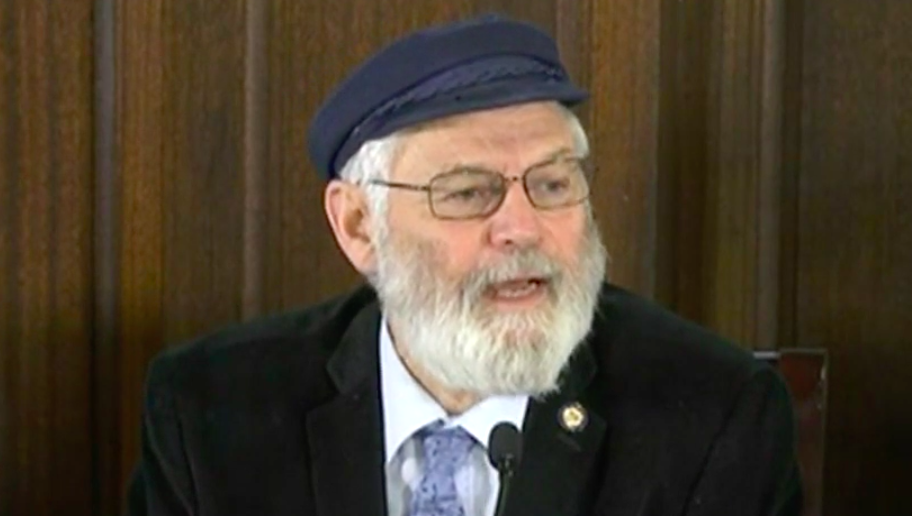CREATIVE FINANCING OF EDUCATION OR KABUKI THEATER?
Homer Rep. Paul Seaton is pretty pleased about HB 287.
In record time, the chair of House Finance got his bill passed to separate education funding from the herd of other operating budget items and advance it out of the House early in the legislative session.
That way, teachers don’t have to worry about getting a temporary pink slip over the summer if a budget agreement is delayed, as it has since the Democrats took control of the House.
Teachers are voters. This is an election year. Such a bill would put their minds at ease.
The bill, as passed by the House, puts $1.32 billion into education, said Seaton, who is the bill’s author. It’s exactly the amount the governor asked for.
Except that it didn’t. An entire $1.2 billion isn’t in the bill that arrived in the Senate.
In a press release, here’s what the Democrat-controlled House wrote:
“HB 287 Eliminates Uncertainty for School Districts and Prevents Unnecessary Teacher Layoffs.”
It does no such thing, because it has no funds for teachers, only funds for miscellaneous education expenses.
“HB 287 appropriates $1.32 billion for K-12 public education, the same amount as proposed by Governor Walker, and includes $1.2 billion from the Constitutional Budget Reserve (CBR) and $67.8 million from the Statutory Budget Reserve (SBR). The decision to fund public education from the CBR preserves more money in the higher earning Permanent Fund Earning Reserves Account,” Seaton said.
In fact, Seaton’s bill had wished for $1.2 billion from the Constitutional Budget Reserve, which requires a three-quarters vote to access.
But the three-quarters vote failed in the House, so the bill went to the Senate without funding. That’s why the money isn’t in there, although the House Democratic Majority wordsmithing says it is.
The $67 million that is in the bill will pay for student transportation, miscellaneous things, and for special schools, such as Mount Edgcumbe High School in Sitka.
There is no regular funding for the base student allocation — the BSA — because Seaton either forgot or decided not to include a fall-back plan if the CBR vote failed.
“This bill is not going to accomplish what people think it does,” said Rep. Mike Chenault, on the House floor. “School bond debt reimbursement is not included in this bill. Neither are PRS and TRS payments that the state makes. That’s going to come along in the remaining bills and the operating budget. Until those are all set in stone, the school districts are not going to actually know how much money they’re going to get.”
Only three members of the House voted against HB 287: Budget hawks Reps. Cathy Tilton, David Eastman, Tammie Wilson.
HB 287 was co-sponsored by House Democrats and nominal Democrats Justin Parish, Jason Grenn, Harriet Drummond, Dan Ortiz, Chris Tuck, Jonathan Kreiss-Tomkins, Bryce Edgmon, Scott Kawasaki, Andy Josephson, Ivy Spohnholz, Les Gara, Neal Foster, David Guttenberg, Louise Stutes, Gabrielle LeDoux, Matt Claman, Sam Kito, Adam Wool, Geran Tarr, Zach Fansler, and John Lincoln, the freshman replacing Westlake.
Now it’s the Senate’s turn, and because it is an appropriations bill, senators could insert the entire operating budget into it and shoot it back to the House as a complete budget. The Senate could do a lot of things to the bill and send it back. But one thing it’s not likely to do is break into the quickly depleting CBR early, before it knows what the rest of the spending needs are.
The CBR balance is roughly $2.59 billion. The Walker Administration has been running deficits of about $2.5 billion a year that have brought the CBR down to its now fragile status.
“Providing for quality public education in Alaska is among our core constitutional responsibilities and warrants this innovative approach,” said Speaker Bryce Edgmon.
The approach was innovative: Pass an appropriations bill over to the Senate but leave out the funding.

I have never understood Paul Seaton’s hat. I wonder if he ever cleans it.
I expect Jonathan Kriess Tomkins to show up in a millenial’s stocking cap some day.
From the picture above it looks like Seaton is saying ” Duhh ???”
Once again, Homerians have to apologize for their Representative.
School bond debt reimbursement is used to sell the bond. The bonds are not used for the stated purpose and the state does not have to reimburse, but they leave that out to sell the bond.
Lincoln replaced Westlake, Fansler’s resignation isn’t official until the 12th.